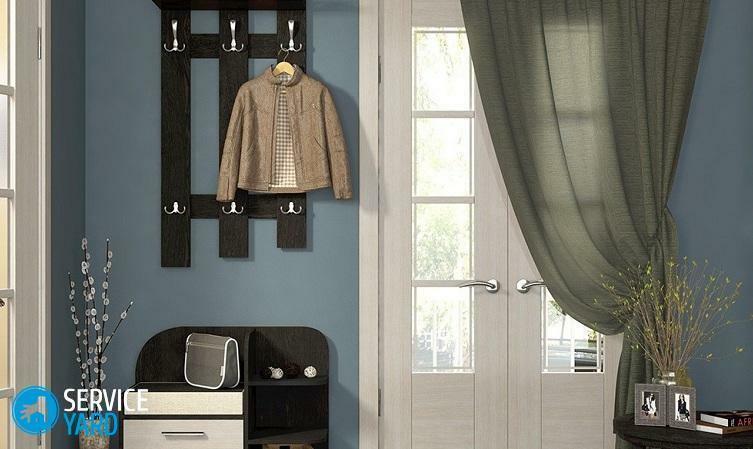When choosing conifers for your site, you need to decide on two main criteria. First, with the size of the coniferous composition and its purpose. Secondly, with a landscape design element, which will include this plant.
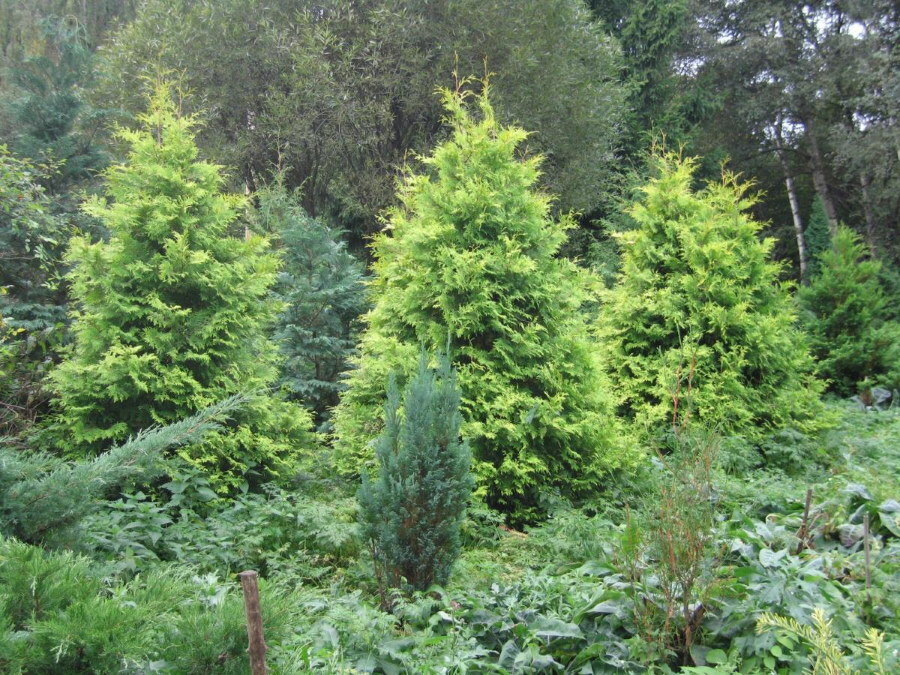
In our country, thuja is not found in the natural environment, it came to us from America and East Asia
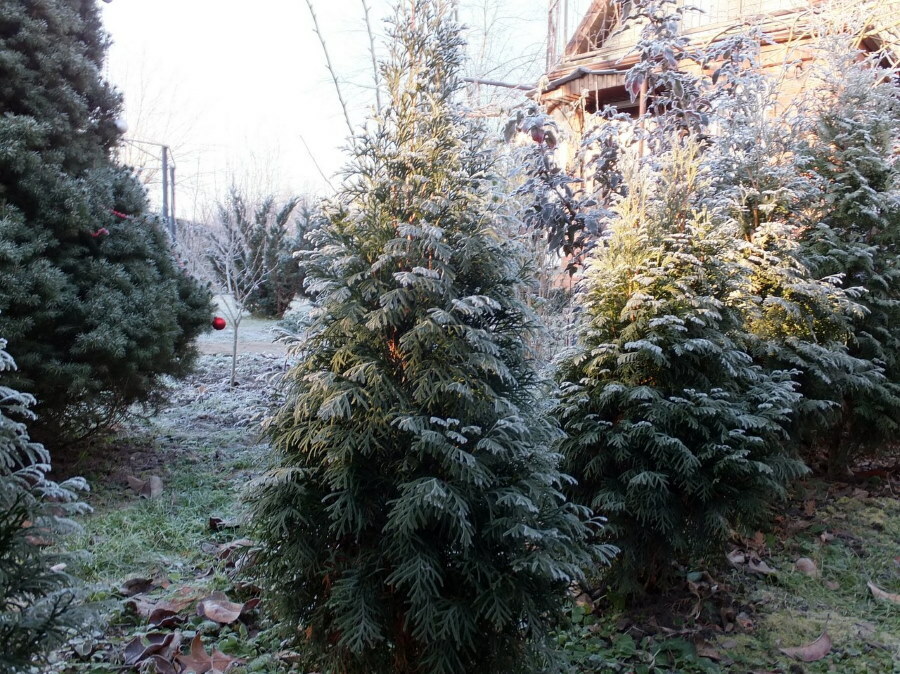
This coniferous plant turned out to be not capricious and took root well in the northern latitudes.
What types and varieties of thuja are used in landscape design
Content
- What types and varieties of thuja are used in landscape design
- Coniferous garden design: how to find neighbors
- Examples of thuja hedges with photos
- Thuja Smaragd hedge
- Use of thuja Brabant
- Spherical thuja - hedge
- Video: Planting a western thuja hedge
- Photo: Thuja in landscape design
Mostly conifers are used for the following elements:
- Thuja hedge. Thuja of a columnar or pyramidal shape are suitable for this element.
- Track decoration. Individual elements of a spherical thuja, planted along walking garden paths, will look favorably on both a large and a small summer cottage.
- Flower garden decoration. In this case, it will be appropriate to use a dwarf thuja of a spherical shape.
There are several types of this coniferous tree: western and eastern, Japanese and Korean, as well as giant. In addition, there is another species, which is a hybrid of western and giant thuja. This combination is called Smaragd.
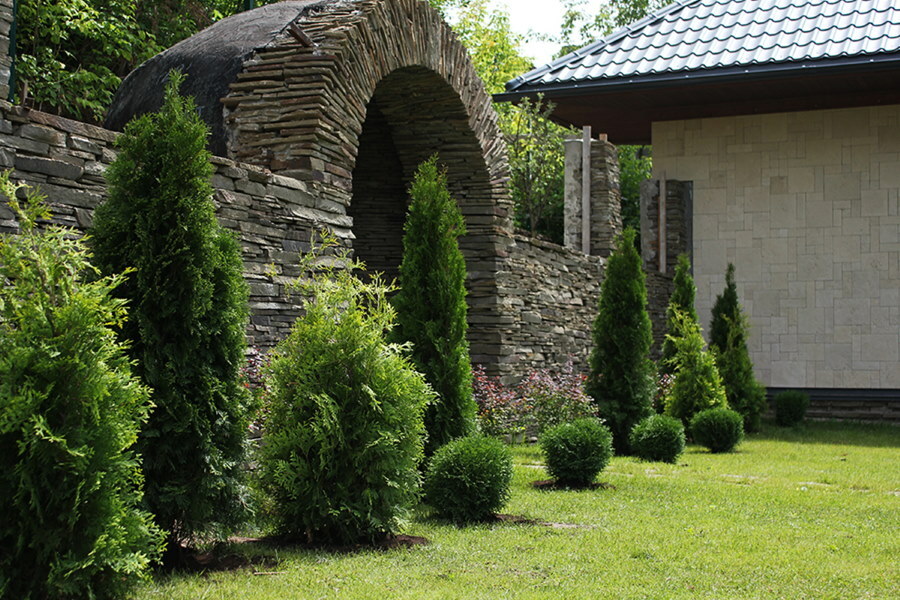
In landscaping, western thuja is most often used, as well as its many forms.
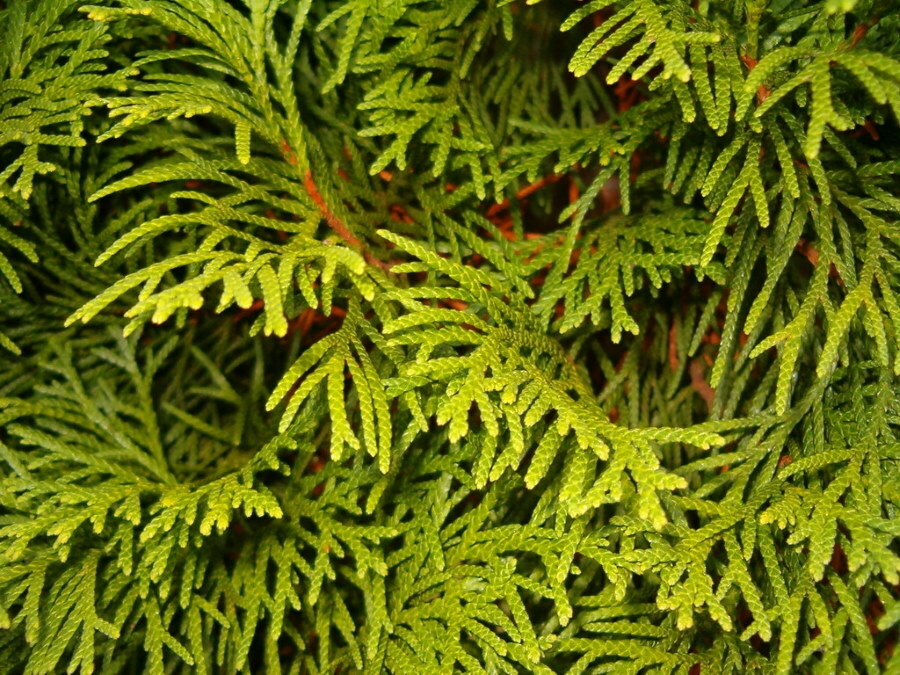
Thuja needles do not consist of needles, as in spruce or pine, but of flat scales superimposed on each other
Each type of thuja has its own classified varieties, which differ from each other in the shape and color of the crown, as well as in the growth rate.
Fast-growing thuja are used to decorate living fences, so they must have good resistance to pruning and shaping.
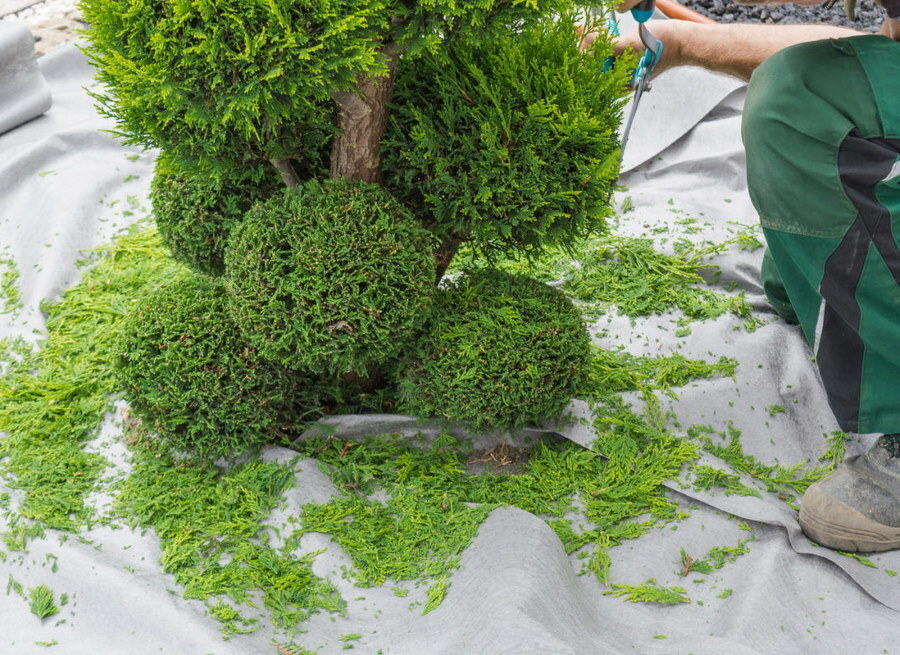
Thuja occidentalis perfectly tolerates formative pruning
Fast growing conifers include the following varieties:
- Brabant - The growth rate is approximately 40 cm. per year, frost-resistant and easy to prune.
- Smaragd - the growth rate is 20-30 cm. per year, is distinguished by the density of the vegetable hedge.
- Kornik - the growth rate is 30 cm. per year, suitable for creating a classic decorative fence.
Despite the fact that the thuja on the site belongs to evergreens, the color of the needles may vary slightly. In addition to the standard green needles, the following shades are found:
- the yellow crown color is most popular among the Western varieties - Westmont, Elegantissima, Golden Pigmy and Aurea Nana;
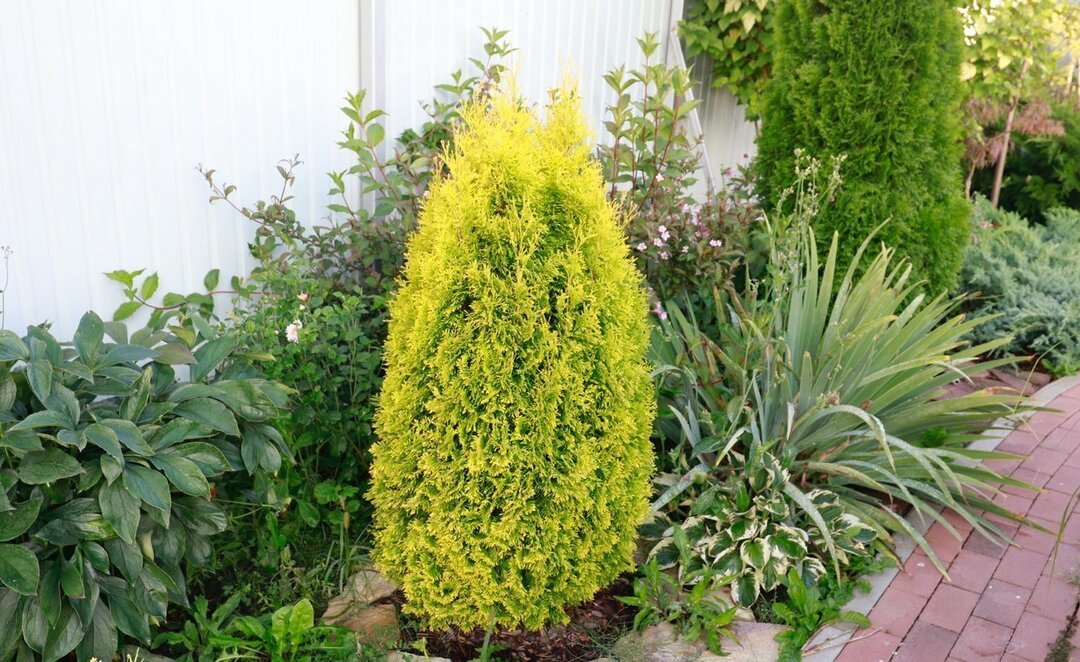
Thuja Golden Pigmi with yellow-green crown
- golden-yellow crowns are characteristic of the Sankist and Golden Smaragd varieties;
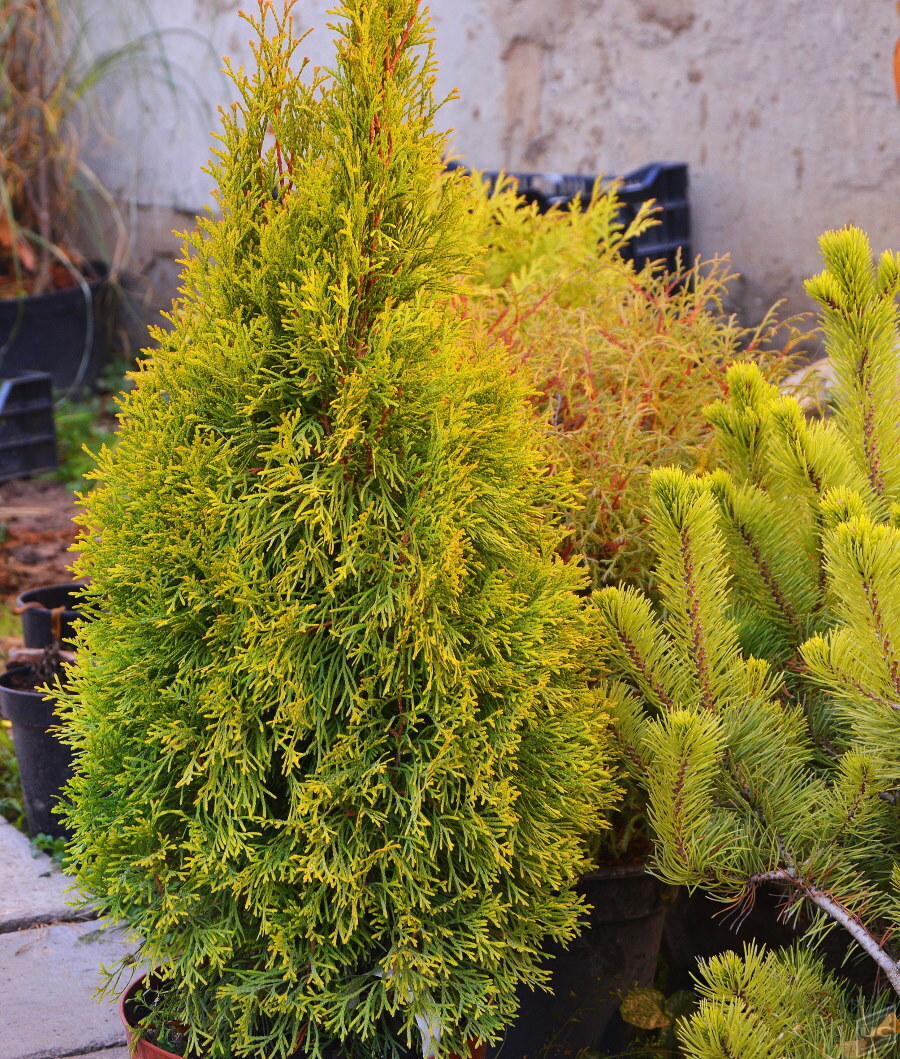
Thuja Golden Smaragd with golden needles
- a dark emerald color can be seen in the Fastigiata and Holmstrup varieties.
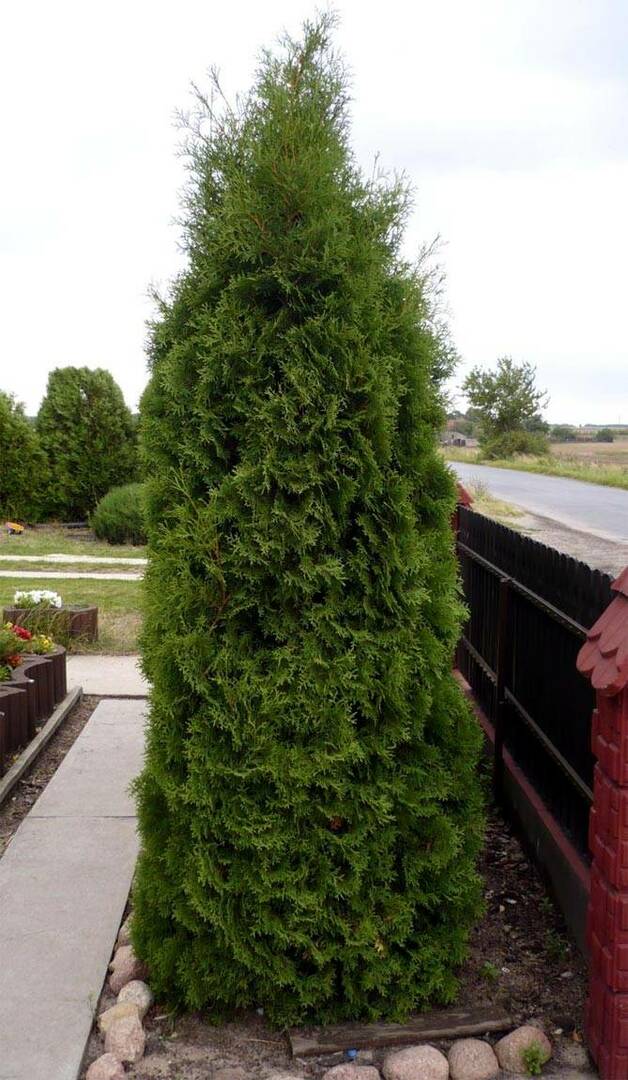
Tuya Fastigiata prefers an open and sunny location, where its crown will look even more colorful and attractive
Coniferous garden design: how to find neighbors
When thinking about which thuja is best suited for a hedge, do not forget to consult with experts about the neighborhood with other plants. It is much easier when the territory of the garden plot is empty and is at the stage of landscape design development. In this case, you should initially select and mix with each other only those plants that are able to get along together without disturbing the soil balance and without limiting the growth of their “neighbor” in the garden.
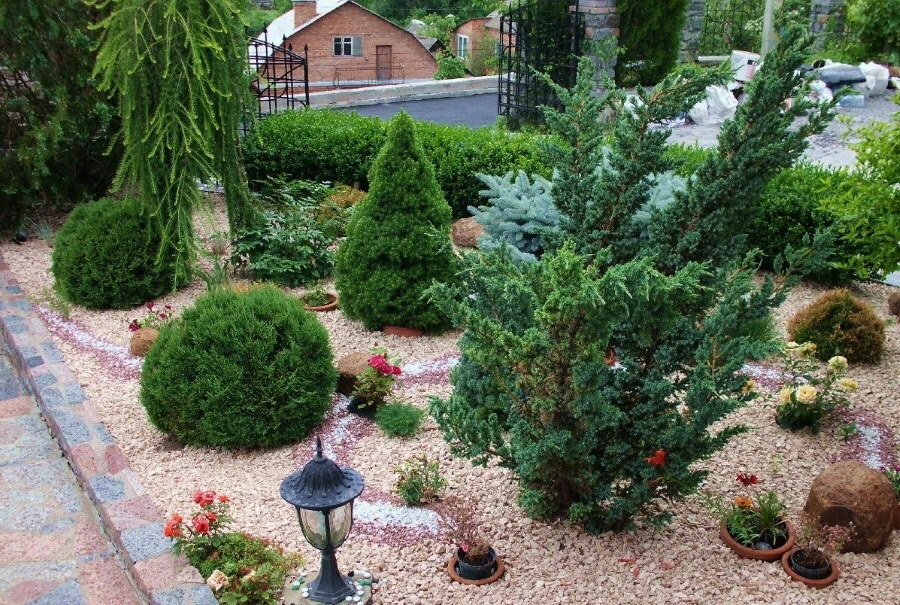
Thuja loves moisture, so the soil under it needs to be mulched.
Not all conifers tolerate proximity to each other. For example, thuja should not be planted next to spruce.
The proximity of coniferous shrubs with some iconic species will favorably affect the growth of both crops. Unpretentious flowers to care for, including lilies, will also make an excellent company for conifers. The exception is roses. While the combination of an evergreen shrub and a blooming rose is ideal for aesthetics, acidic soil can be a major killer of rose bushes. You can replace them with juniper. Growing in width, this shrub will be an excellent addition to both tall blue spruces and any varieties of thuja.
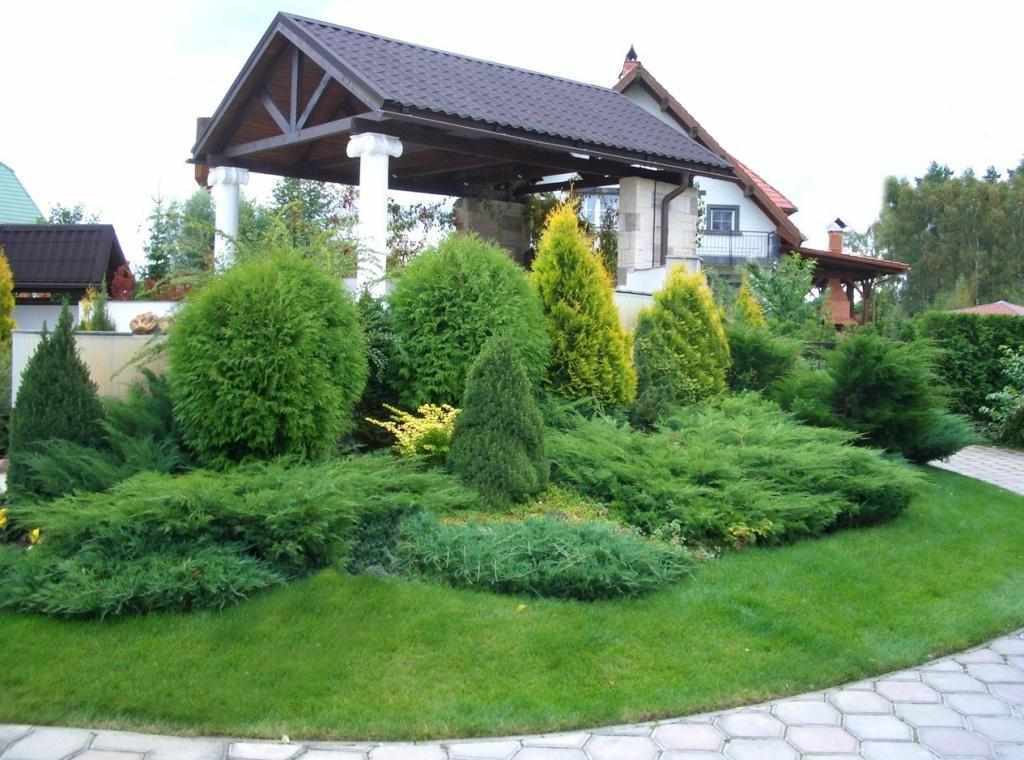
Tui look great with junipers. When planting together, take into account the growth of plants
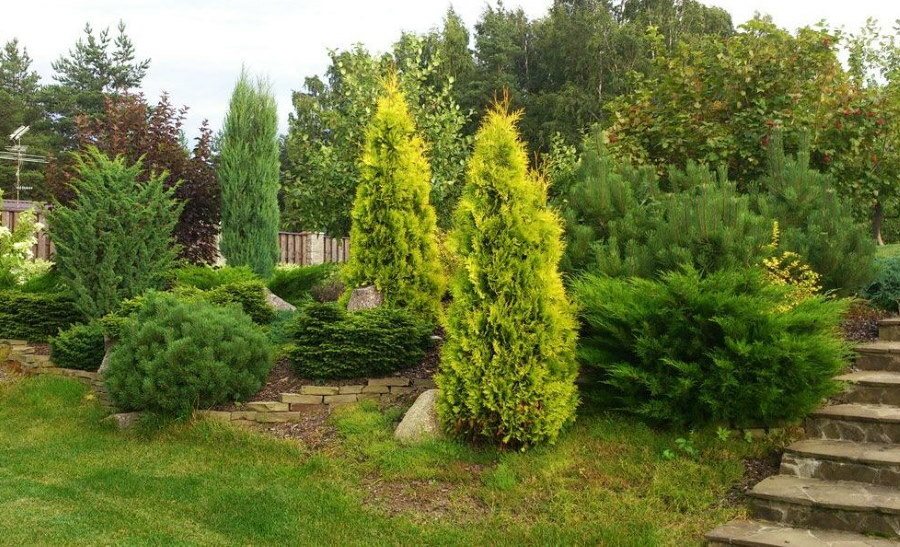
If there is a slope on the site, it can be turned into a giant alpine slide with conifers
Conifers look very beneficial in the form of tapeworms, acting as a single element in the landscape, as well as in combination with other forms of decor. It will look unusual on a personal plot of a small reservoir and various types of coniferous shrubs and trees growing around it. At the same time, a simple landscape design with pyramidal thuja in combination with a neat lawn can also surprise, creating an unusual geometric ensemble on the garden plot.
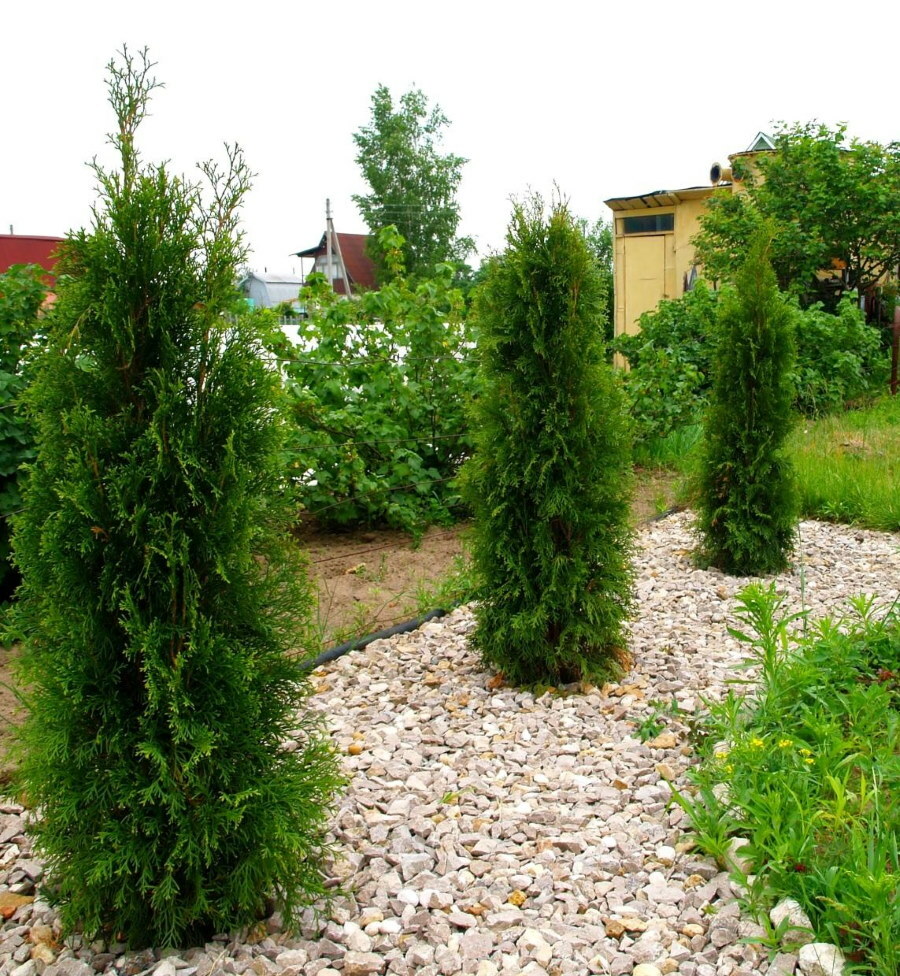
All varieties of western thuja are suitable for both single planting and for creating a hedge
Thuja is a light-loving plant that requires sufficient light to grow well.
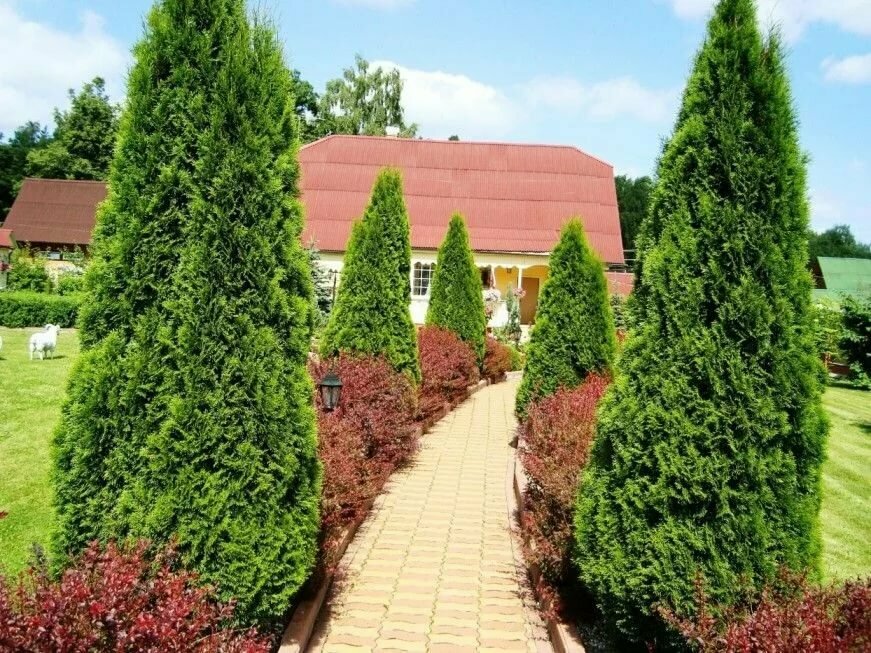
The hedge of barberry bushes, diluted with pyramidal thuja, looks interesting
Examples of thuja hedges with photos
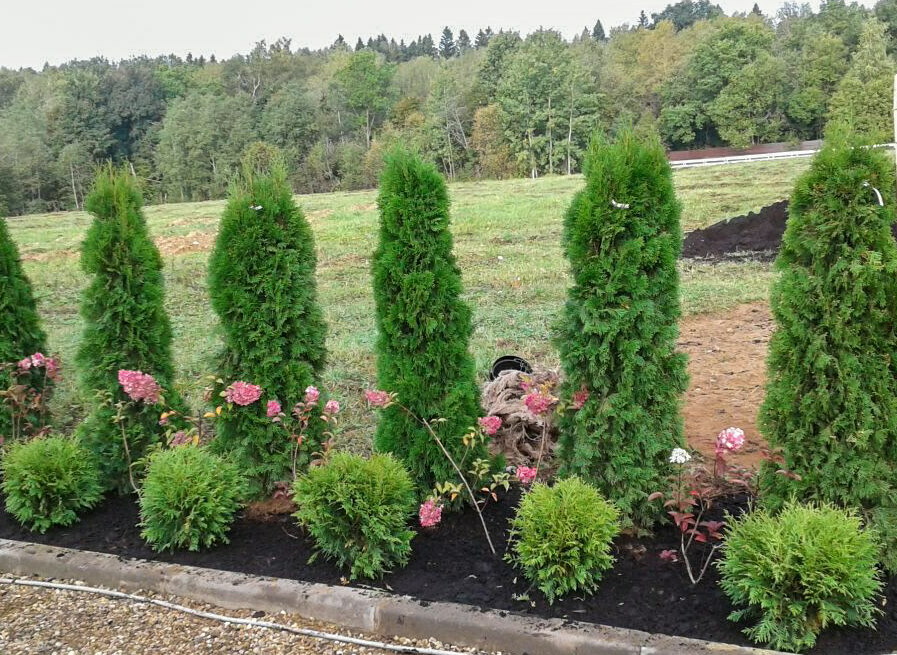
To create a hedge, thuja of different varieties and shapes are used.
Thuja Smaragd hedge
For a dense and evergreen hedge that retains its bright color and strict regular shape throughout the year, you should choose the emerald green thuja of the Smaragd variety. It is highly adaptable, can grow in hot and humid climates and tolerate frost.
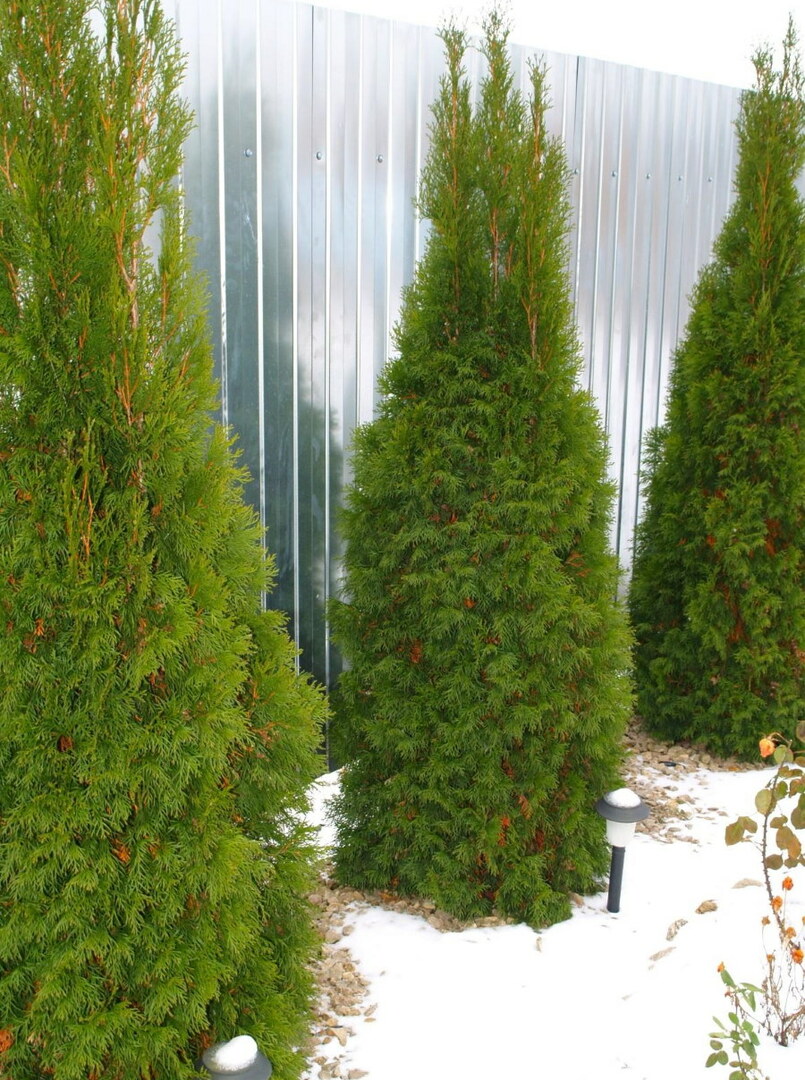
Thuja Smaragd is interesting for the preservation of the emerald green color of the needles in the winter.
There are a number of immediate advantages for choosing this variety of thuja:
- Firstly, a thuja hedge of this variety is ideal not only for decorating a garden plot, but and can serve as a living fence in those places where it is impossible to install a separation network or other design.
- Secondly, this variety belongs to fast-growing coniferous shrubs, which in the future guarantees the presence of a tall hedge in a relatively short time.
- Thirdly, the thuja of the Smaragd variety retains its deep emerald color throughout the year.
Having a narrow pyramidal shape, thuja initially grows with a magnificent natural crown, which is also well prone to regular haircuts. Resistance to disease and environmental factors makes this variety the most popular hedge with relatively low operating costs.
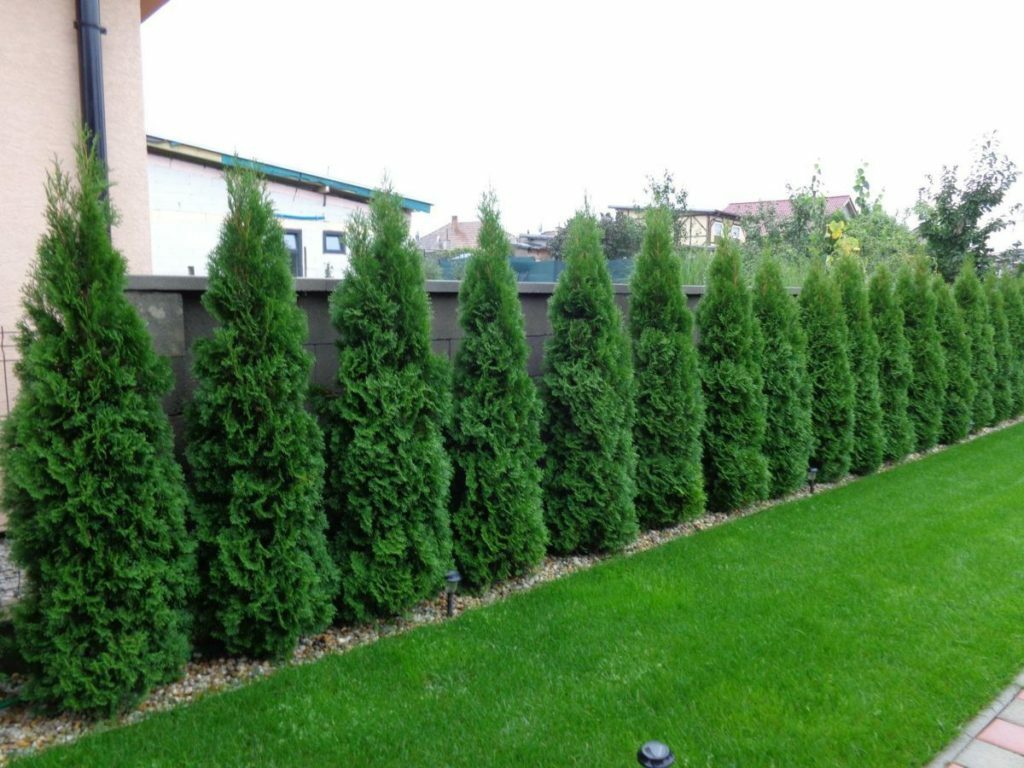
The Smaragd variety belongs to the decorative pyramidal forms of western thuja
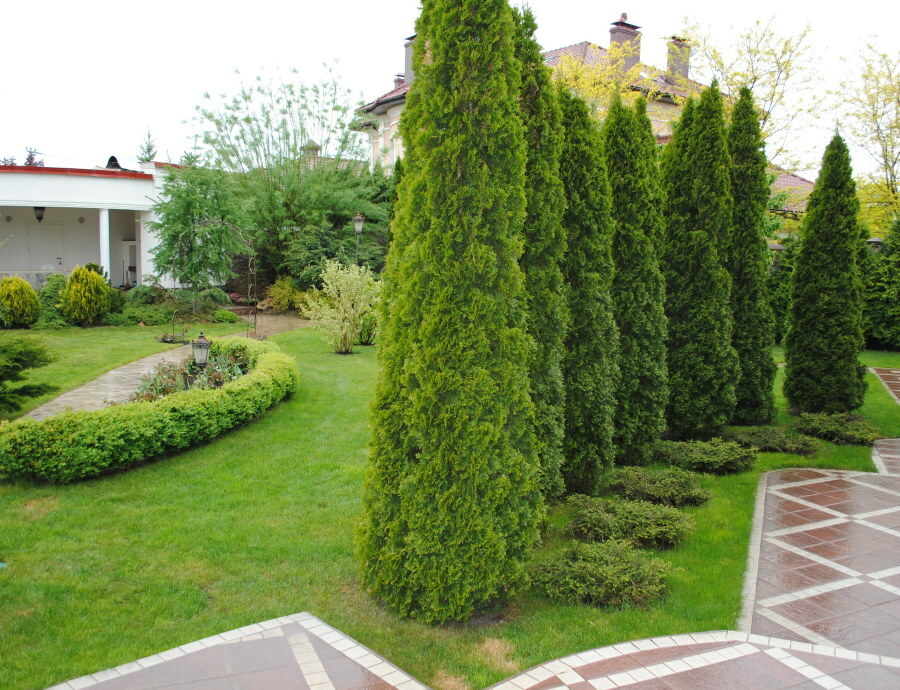
A thuja hedge of this variety can live for 50 years or more.
Smaragd feels good in various weather conditions and even in the coldest winter is able to maintain its shape and color unchanged. Thuja prefers well-drained soil with constant moisture. The bright color and conical shape of the shrub make Smaragd an ideal design option for garden paths.
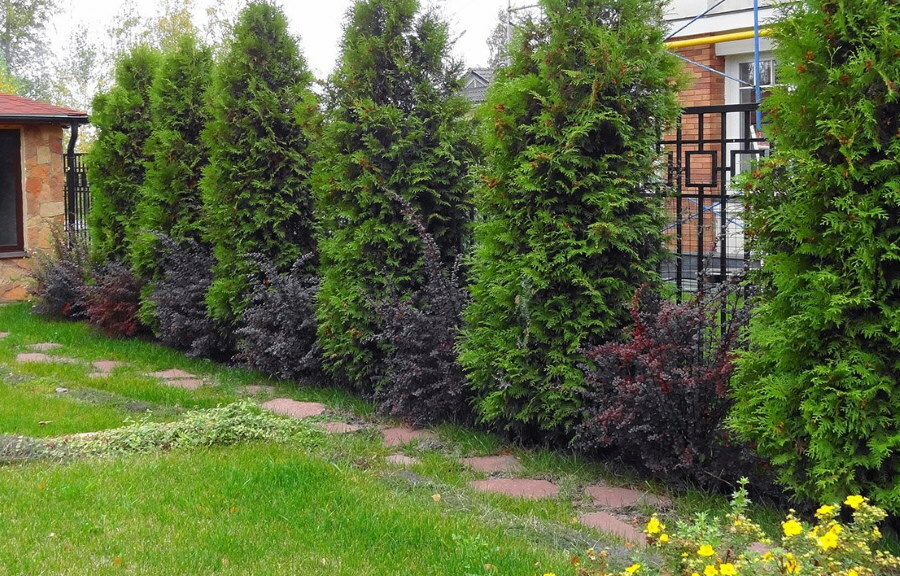
Hedge placement options depend on the size of the landing site
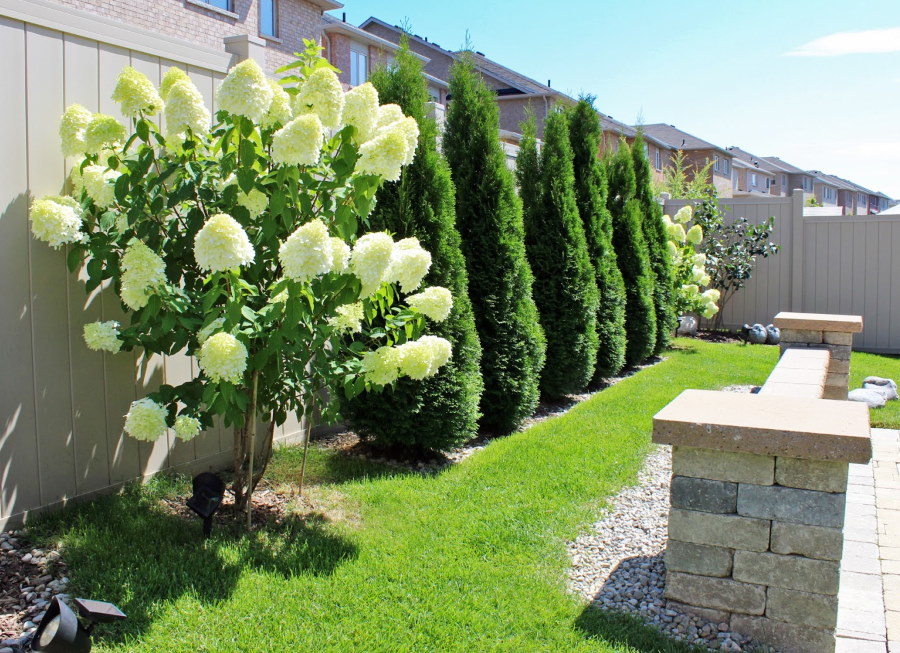
In a small garden, you should not create a hedge taller than a person.
Use of thuja Brabant
Brabant is a fast growing hedge with a compact and dense crown. A lonely growing shrub can grow into a large, conical evergreen tree that can be easily trimmed.
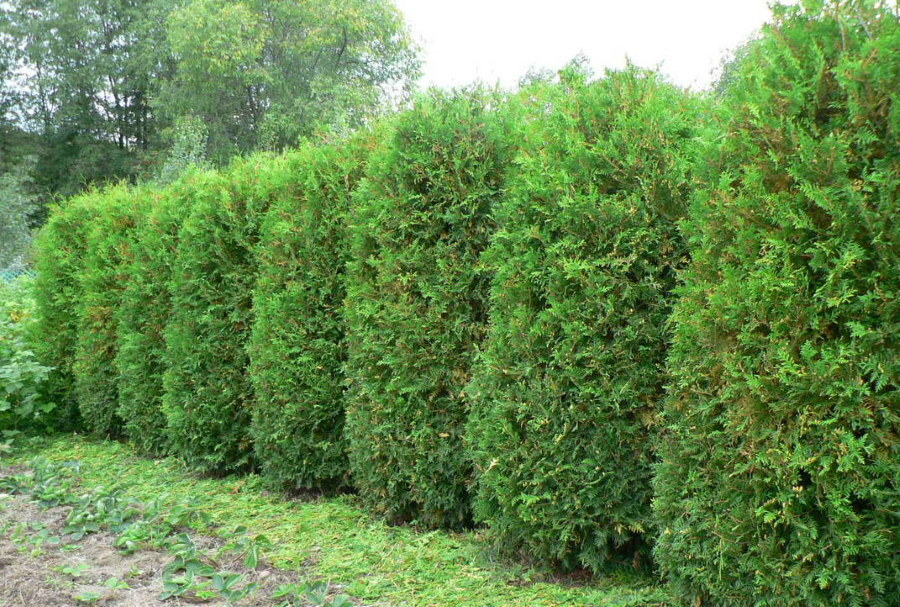
Thuja Brabant hedge can be a good wind protection with a mesh version of the site fencing
Densely planted trees can form a continuous screen of hedges that have a height of 150 cm or more. up to several meters. On average, subject to favorable soil and climatic conditions, Brabant can grow up to 60 cm. per year. Like all varieties of thuja, the foliage of Brabant is soft, flattened needles with a pleasant pine scent, while the color is slightly lighter than that of most other varieties.
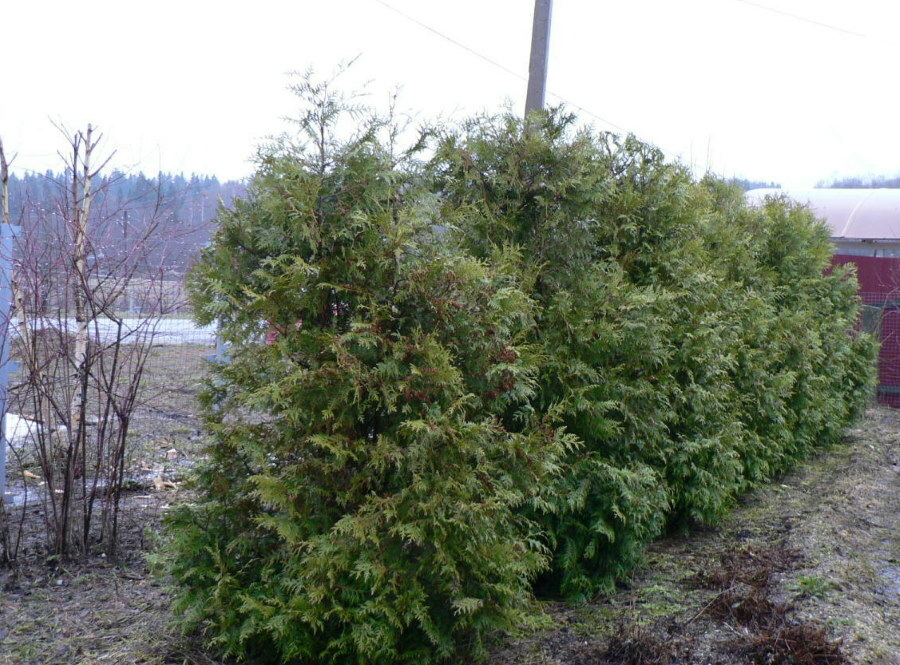
Before planting a hedge, it is necessary to decide whether the thuja will be closed by crowns
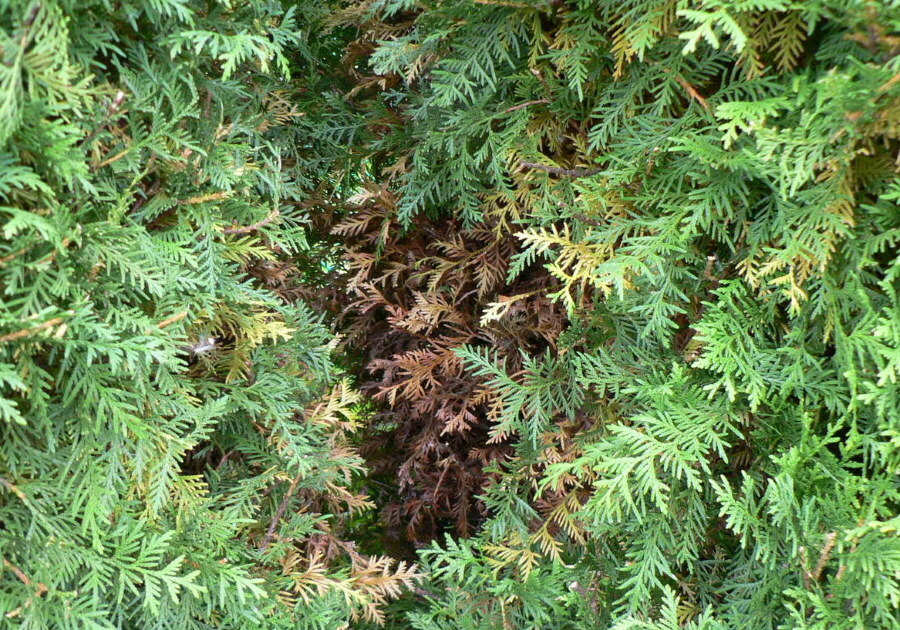
When planting close, you will get a continuous row, covered with dense thickets of thuja branches. However, inside the needles it will lose its green outfit and it will not be possible to restore it.
It is best to trim a thuja fence in the fall so that it looks neat and to give it a clearer shape, but no more than twice a year.
Spherical thuja - hedge
Thuja varieties of spherical shape are miniature coniferous shrubs with lush balls of crowns. The height of the largest bushes usually does not exceed 1.5 meters. Therefore, it is not difficult for gardeners to maintain the round shape of this type of plant.
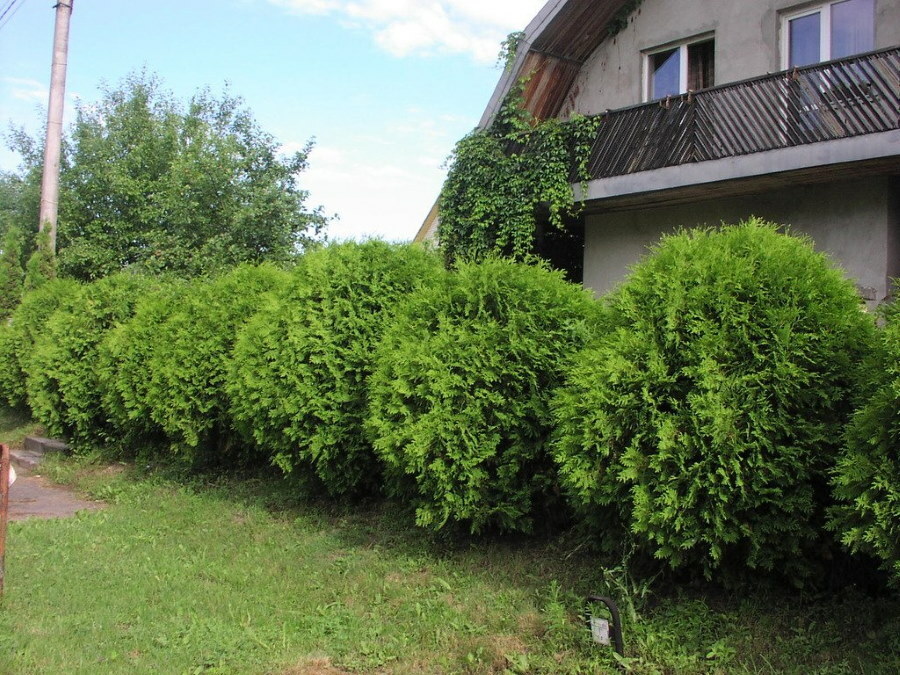
Spherical thujas do not require special crown shaping
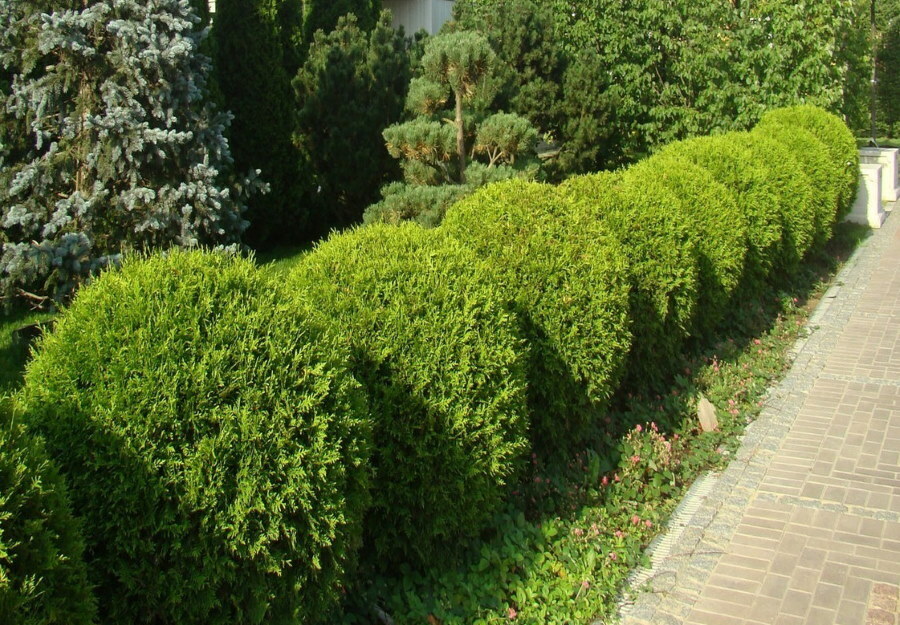
Different varieties of spherical thuja can have the shape of a regular ball or be slightly flattened or elongated
Like most conifers, it prefers drained soil. With age, the branches of the bush become more spreading, and the crown is looser. This is the only disadvantage of spherical thuja, which can be easily eliminated by pruning old shoots. The advantages of a coniferous shrub include its frost resistance, decorativeness, unpretentiousness in care, as well as the ability to grow both in the shade and in the sun. However, the main rule of globular shrubs should be taken into account - the crown of shrubs should be tied in winter. This will avoid snow damage to the branches.
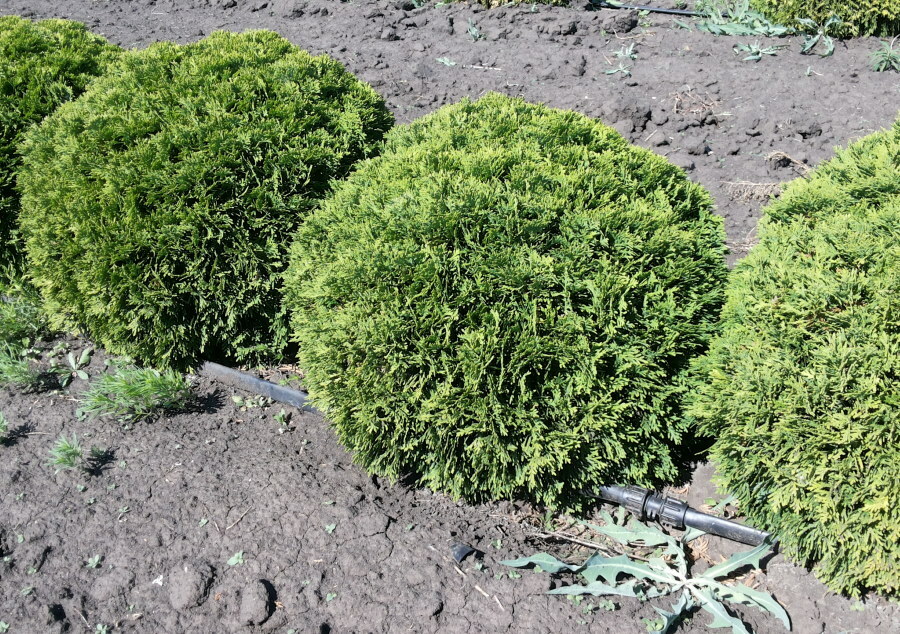
Thuja Danica has an almost ideal ball shape
Numerous photographs of thuja in summer cottages prove that these conifers are ideal for organizing hedges, as they are unpretentious in maintenance and very tenacious. The crown of trees can be cut back to the trunk and they will grow over and over again, giving new shoots. In this way, you can adjust not only the height of the hedge, but also its density.
Video: Planting a western thuja hedge
Photo: Thuja in landscape design




